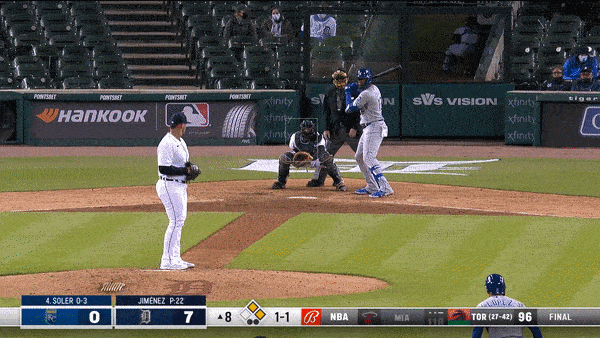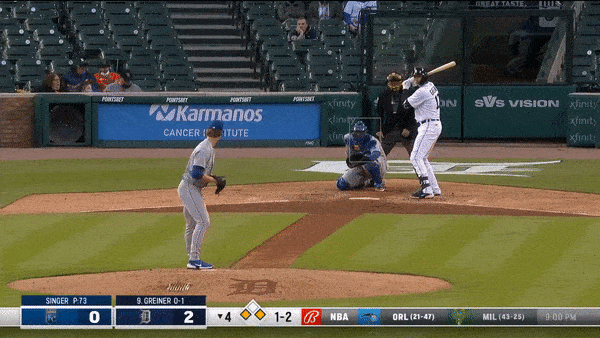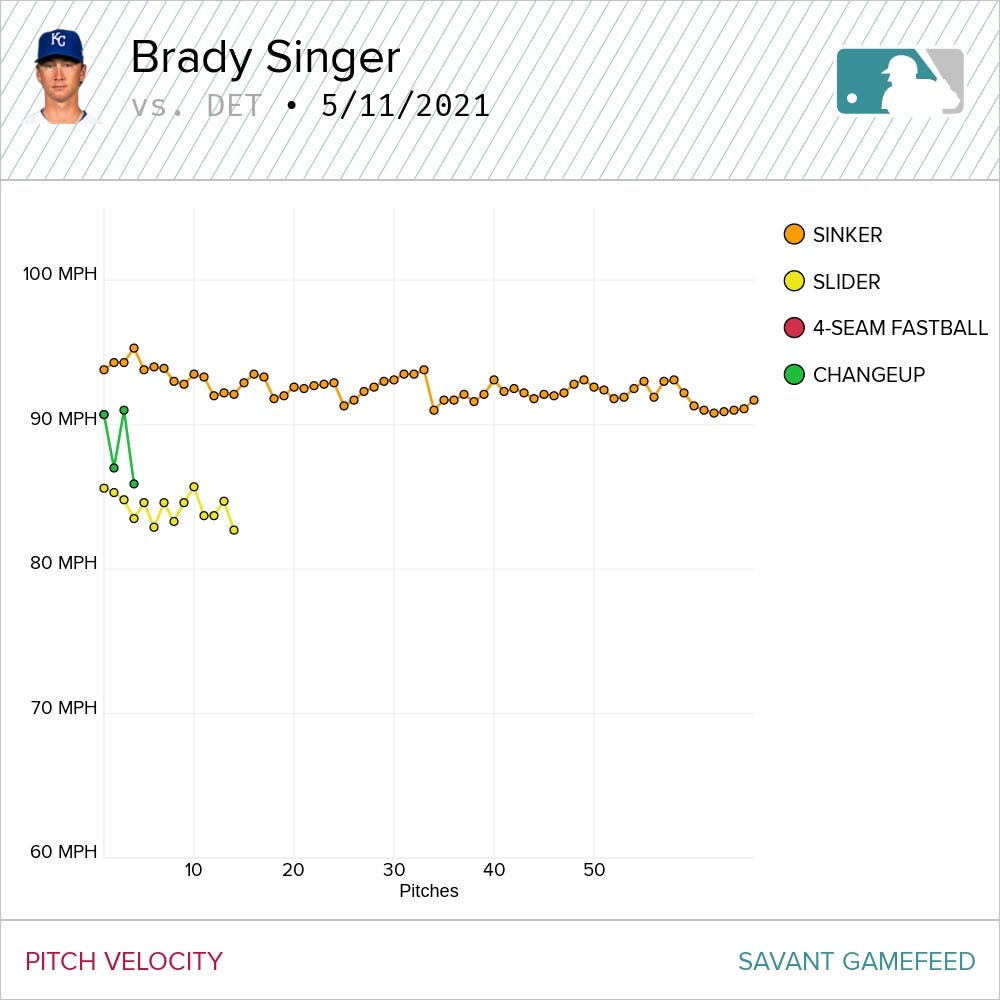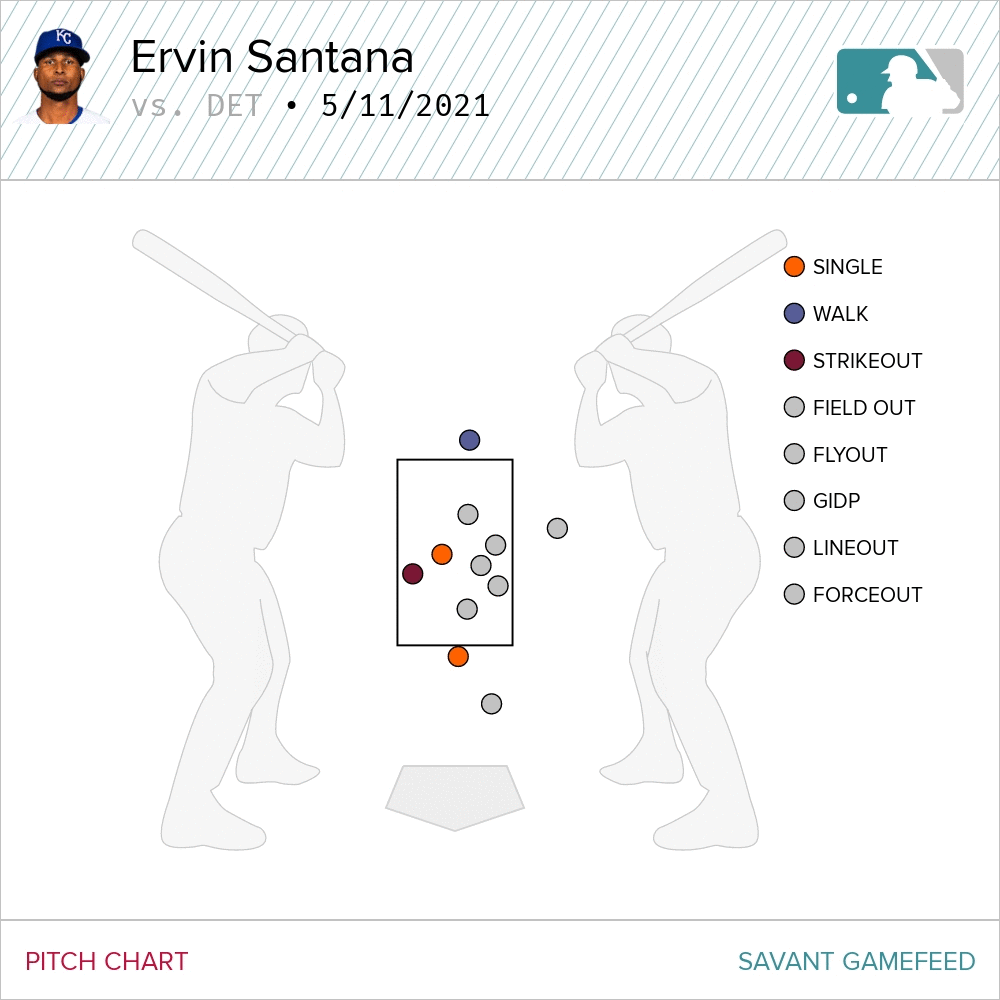Oh, so close!
Jorge Soler turns into a late-inning one-man wrecking crew, Brady Singer gets blooped around and while the Royals made it interesting, they drop their ninth in a row.
Nothing says baseball in 2021 like a team blowing a seven-run lead and then walking it off in a ninth inning where five players come to the plate, but only one batter puts the ball in play.
Alas, the losing streak has reached nine games.
Maybe it’s a moral victory? The Royals weren’t doing anything offensively and were trailing 7-0 going into the eighth. Given the way things have been going, it’s probably a minor miracle they scored a single run, let alone seven to tie it. But moral victories don’t count in the standings. Maybe the help with the run differential and could be reflected in the Pythagorean standings, but a loss is a loss. And when you’re on a run of nine in a row, it’s still going to sting.
But what about momentum? Anything is possible in baseball, but I truly subscribe to the axiom that momentum is tomorrow’s starting pitchers. I’ve seen too many crazy Royal wins that were supposed to turn the tide instead followed by extended losing streaks. For all the data that permeates the game, sometimes baseball just can’t be explained.
Like so many games, this one was settled by the thinnest of margins. Some bloop hits, a couple of ball just out of the reach of the fielders and a bomb that falls short of clearing the fence. But those margins add up to the Royals’ ninth consecutive loss.
The offense shows some fight
Matthew Boyd having a fine season. Entering Monday’s start, he had thrown 35.2 innings with a 2.27 ERA. He’s walked seven against 24 strikeouts. In his previous start against the Royals last month he went eight innings and allowed two runs, one earned. He’s become the kind of starter the Royals wouldn’t want to face, being in this mega offensive slump and all.
And he locked them down, allowing just six baserunners in six innings while striking out five. It was a familiar refrain from the Royals’ offense.
But hold on!
If Boyd has been having a fine season, the Detroit bullpen…that’s another matter altogether. Coming into Monday’s action the Tiger relievers had a 6.65 ERA, the worst mark in the majors by over a run. There’s dreadful and then there’s the Tiger bullpen.
And thank goodness for that. After Boyd stepped on the Royals’ collective throat for two-thirds of the game, the bats began to stir from a week-long slumber. The awakening was all courtesy of the Detroit relief corps.
Joe Jiménez has struggled to throw strikes this year. Entering Monday he had faced only 10 batters but had located just 39 percent in the strike zone. It’s the ultimate of small samples, but of those 10 batters faced, Jiménez had put seven on with walks. He had also struck out two. He’s putting that whole Three True Outcomes thing to the test.
Jiménez relies on his fastball/slider combo. The fastball has spin rate that approaches the 90th percentile so it comes in at about 93 mph up in the zone. The slider he’s having a helluva time locating this year, often throwing it well off the plate. It’s been an easy pitch to take. He struggled with the zone again on Monday, yet continued to flirt with the Three True Outcomes, walking two and whiffing two in his first four batters faced. That brought up Soler.
Jiménez went with straight sliders against Soler. That’s just a smart approach for a two-pitch reliever when one of those pitches is the slider. Soler is hitting .263 with a .526 slugging percentage on heaters this year. Against sliders, he has a .207 BA with a .310 SLG.
What’s not smart is hanging the third slider.
As you know from Monday’s newsletter, entering Monday’s game the Royals’ last run-scoring base hit came on a Soler double in the fifth inning on Wednesday. They then went over seven innings without scoring a run. Finally…Finally, it was that man Soler who took matters into his own hands. Soler followed that eighth inning dinger with a 422-foot drive to center in the ninth that left the bat at 109.6 mph. It was the hardest and furthest hit ball from both teams on the night. It just eluded the grasp of Akil Baddoo and was a bases-clearing double. Two late-inning plate appearances. Six runs brought home. Soler was a one-man comeback machine.
There was nothing cheap about either of those hits from Soler. The home run was barreled and had an xBA of .940. The double was likewise barreled and carried a .990 xBA.
It’s too bad the game was played in Detroit. In almost any other ballpark, that double leaves the yard, and the Royals have a ninth inning lead. Bad luck is a hallmark of an extended losing streak. That qualifies.
Soft contact and big runs
In the bottom of the fourth, Jonathan Schoop led off with a triple. At 109.5 off the bat, it was the hardest-hit ball of the evening for the Tigers. Center fielder Michael A. Taylor was shading Schoop a little to the right, but the baseball was placed in the left-center gap. It was a way to travel for Taylor, and as noted above, the ball has crushed, but it looked like he took a route to the ball that had him thinking he could make a play.
Taylor generally gets outstanding jumps on balls hit to him in the outfield. According to Statcast, he gets 2.4 feet of jump versus the average outfielder, which is the tenth best measurement among major league outfielders. Taylor also runs solid routes. On the broadcast, the video feed switched to the high angle behind home plate almost immediately after Schoop made contact. From the first frame, we can see Taylor was already on the move.
It’s a difficult play and had Taylor ran more of a route designed to cut the ball off, maybe he could’ve gotten the ball before it reached the wall. But even then, that part of the year is incredibly deep, and Taylor’s momentum would’ve been taking him even deeper, if possible. In real-time, I was thinking Taylor could’ve held Schoop to a double. Although because of what came after, I’m not certain that would’ve mattered.
Because after Schoop ripped the ball, Brady Singer gave up a lot of soft contact that landed for base hits. A bunch of tiny jabs combined to ultimately deliver the knockout. From Baseball Savant, here’s how the rest of Singer’s night played out after that triple…the order runs from the bottom up.
It looks like a brutal stretch of luck. But Singer wasn’t helping his cause by missing the target Salvador Perez was setting for him.
On the single to Willi Castro, it was an 0-1 pitch where Perez was set up low and away. It wasn’t a bad pitch, located well below the strike zone, but it was centered enough over the plate that Castro was able to go down and get it.
On the video, you can see how Perez has to shift back over to where he would need to receive the pitch.
The next batter was Akil Baddoo. On a 2-2 pitch, Singer delivered a center-cut slider. Baddoo waited on the pitch and flicked it to left. It’s never ideal to leave a slider sitting over the middle of the plate, even on a two-strike count.
For Greyson Greiner, Singer jumped ahead 1-2. Time for another slider. Perez set up looking for one designed to start in the zone and then dive to where it would hopefully be just out of reach. With a runner on third, Singer needed a strikeout.
On this pitch, Singer executed perfectly. Greiner was just able to drop the bat head and loop it into right.
With the single from Greiner, it was again runners on the corners. (There were runners on the corners in every one of these at bats. Every single one.) Singer worked the count 3-2 to Robbie Grossman. Grossman fouled off a couple before putting a ball in play. Perez set the target low in the zone, looking for a slider.
The slider came, but it was well elevated for a sacrifice fly.
Finally, it was a Harold Castro single that knocked Singer from the game. Same story. Perez sets up low and away.
And Singer delivers low, but not so much away.
Except for the sliders to Baddoo and Grossman that caught far too much of the plate, these weren’t horrible pitches, but Singer often failed to hit the target as established by Perez. Exit velocity doesn’t always tell the whole story of how an at bat turned out the way that it did.
Aside from the first inning where Singer put the Tigers down in order, his night was a grind. He escaped a bases-loaded jam in the second where he threw 26 pitches, 22 of them sinkers. When he returned for the third, he lost a little velocity. You can see the drop.
Monday’s start is a nice capsule on how a young starting pitcher progresses while learning his craft. It’s the small things like maintaining velocity, hitting the target, that will ultimately make the difference for Singer. This was his 19th major league start. He’s still very much a work in progress, but one that retains the promise we’ve seen in flashes.
Ervin Santana masterfully does his job
In his return to the majors, Ervin Santana has, for the most part, scrapped his change-up and relied on his fastball/slider combo. It’s a smart gambit given that his change has traditionally been the weaker of his secondary pitches.
On Monday, Santana pitched three shutout innings throwing 40 pitches total—22 fastballs and 18 sliders. He allowed just two hits and one walk. Both hits came against the fastball.
It was vintage Santana, showing the fastball up and the slider down, while never straying too far from the zone. He was hitting his spots and kept the Detroit hitters off balance. His job was simply to save the bullpen from further about and navigate the final three innings. It seems strange to give a pitcher credit for keeping the deficit at seven runs, but in this case, the credit is absolutely deserved. He allowed Mike Matheny to avoid bullpen overload and at the same time strangely kept the team in the game. As I wrote about the Tiger bullpen above, if an offense can’t do damage against those relievers, all hope is lost.
Central issues
Cubs 2, Cleveland 3
Shane Bieber allowed 13 baserunners in just over six innings of work but allowed just two runs. Jose Ramírez and Cesar Hernandez both homered to provide all the scoring for Cleveland.
Twins 3, White Sox 9
The Twins jumped out to an early 3-0 lead but Yasmani Grandal clubbed a three-run homer to tie the game in the second. The score remained knotted until Jose Abreu hit a two-run blast in the sixth. Adam Eaton added an RBI double where every Twins player in the outfield seemed to fall down in some bizarre confrontation with gravity. Or maybe that’s just how the season is playing out for Minnesota.
Up next
The Royals finally set their rotation for the next two games. They’ll go with Danny Duffy on Tuesday against Casey Mize. On Wednesday it will be Daniel Lynch returning to the mound after getting battered by the White Sox. In his media call before Monday’s game, Matheny said the club was moving Lynch up a day to avoid facing the White Sox again and because of his abbreviated outing last week.
We’ll see if he fixed the mechanics on the slider.


















